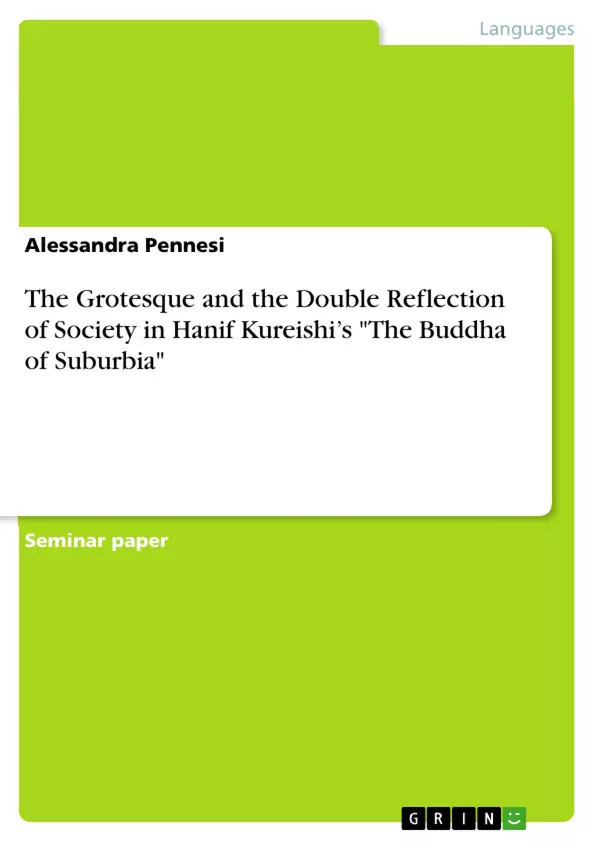With the use of the word “grotesque” a whole range of different meanings is called into question. The cultural history of this word has crossed centuries, adopting for each epoch a different nuance of significance, so that it is virtually impossible to establish fixed, universal attributes to it. The very first examples of grotesques were the “bizarre wall paintings” found in Nero’s Domus Aurea, which represented “elaborate knots and festoons of floral decoration” and “designs oddly transforming into snakes, satyrs [and] mythological animals” (Clark). The essence of this art was later developed according to different interpretations, being associated to caricature and caprices in the seventeenth century and to horror and repulsion in the nineteenth century (Connelly). It is therefore important to consider that the grotesque is to be understood primarily as a cultural and social phenomenon, constantly changeable and subjected to the spirit of the times.
Inhaltsverzeichnis (Table of Contents)
- Introduction: The Social Function of The Grotesque
- The Spielraum of Sexuality
- The Representation of Ethnicity between Comedy and Drama
- Irony and Metatextuality as Spaces of Encounter between Cultures
- Marketable Identities and The Question of Meaning
- Summary: Performed Diversity and The Human Element
Zielsetzung und Themenschwerpunkte (Objectives and Key Themes)
This essay aims to analyze the role of the grotesque in Hanif Kureishi's novel "The Buddha of Suburbia," exploring how it functions as a critical tool to expose the complexities of modern society. The essay examines the ways in which the grotesque is employed to challenge societal norms and to illuminate the fluidity of identity in a multicultural context.
- The Social Function of the Grotesque
- The Grotesque and Sexuality
- The Representation of Ethnicity
- Irony and Metatextuality
- Identity and Meaning in a Multicultural Society
Zusammenfassung der Kapitel (Chapter Summaries)
The first chapter examines the concept of the grotesque and its historical evolution, emphasizing its cultural and social significance. The chapter argues that the grotesque, as a fluid phenomenon, is particularly relevant to understanding modernity.
The second chapter focuses on the representation of sexuality in "The Buddha of Suburbia." It analyzes how Kureishi utilizes the grotesque to explore themes of sexual perversion, power dynamics, and the blurring of boundaries in relationships. The chapter also considers the connection between sexual experimentation and the development of identity in the novel.
The third chapter delves into the representation of ethnicity in the novel. It explores how Kureishi employs the grotesque to challenge cultural stereotypes and to highlight the complex interplay between comedy and drama in the depiction of ethnic identities.
Schlüsselwörter (Keywords)
Key terms and concepts explored in this essay include the grotesque, sexuality, ethnicity, irony, metatextuality, identity, cultural stereotypes, multiculturalism, and modern society. The essay focuses on the use of the grotesque as a critical tool for examining the complexities of these themes in the context of Hanif Kureishi's "The Buddha of Suburbia."
- Quote paper
- Alessandra Pennesi (Author), 2018, The Grotesque and the Double Reflection of Society in Hanif Kureishi’s "The Buddha of Suburbia", Munich, GRIN Verlag, https://www.grin.com/document/901054



